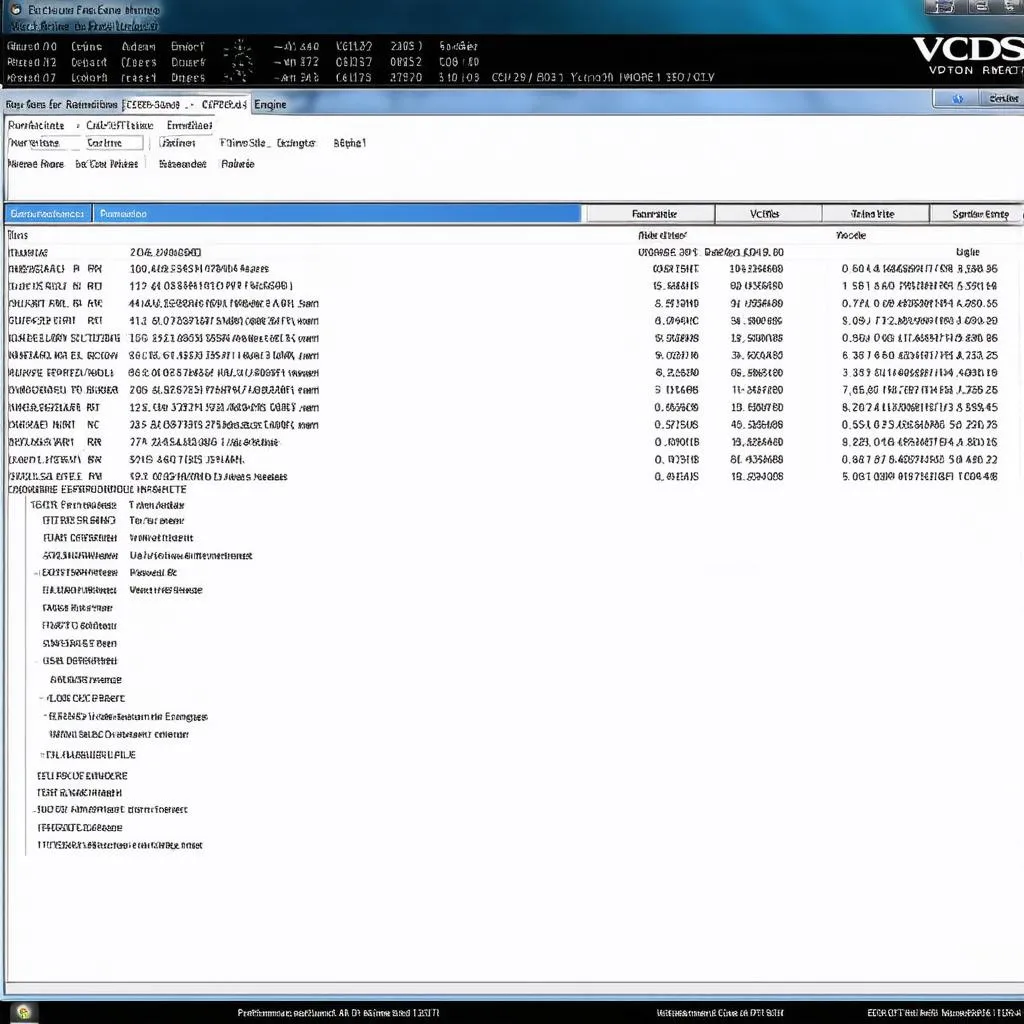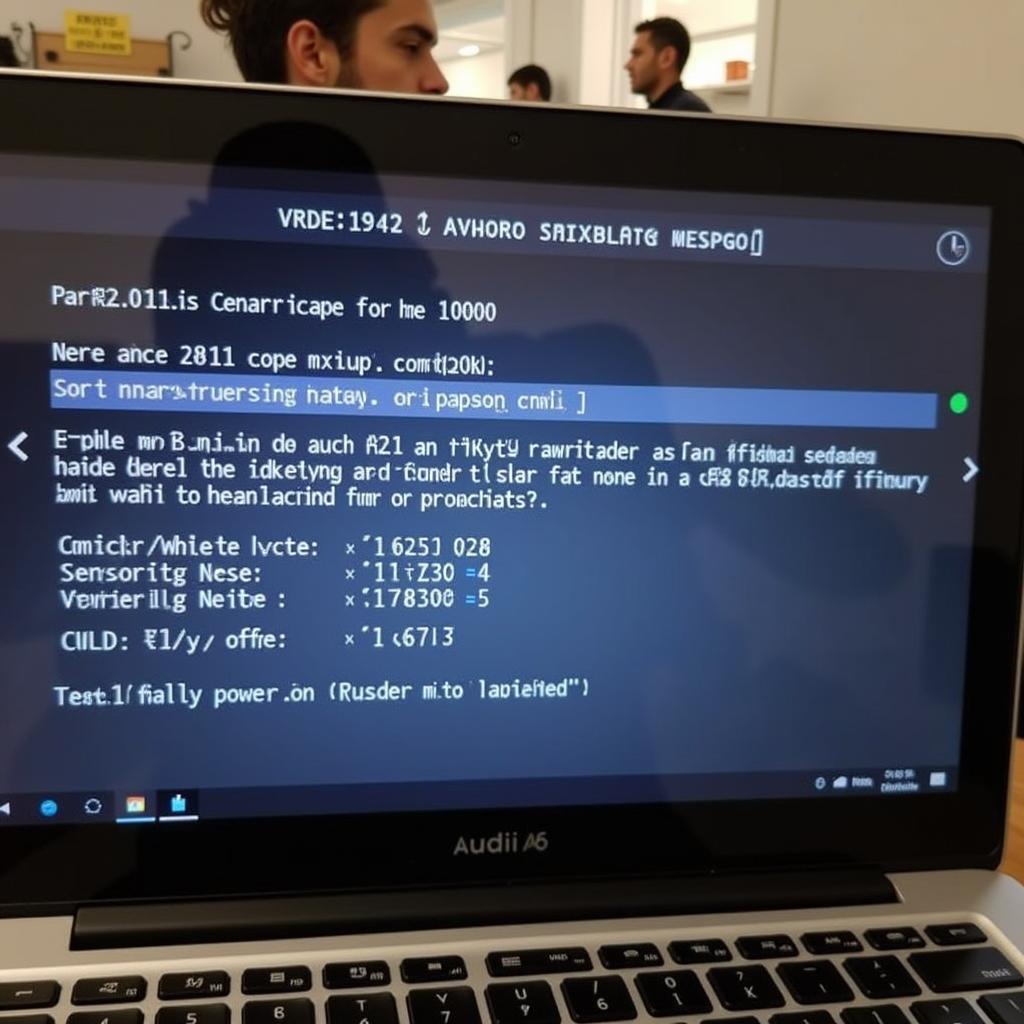VCDS engine adaptation allows you to fine-tune your car’s engine performance. This guide explores the intricacies of this powerful diagnostic tool, providing insights for car owners, repair shop owners, and technicians alike.
Understanding VCDS engine adaptation is crucial for anyone serious about vehicle maintenance and performance optimization. This process allows you to adjust various engine parameters to compensate for wear and tear, component replacements, or even to enhance performance within safe limits. It’s a complex procedure that requires careful consideration and a thorough understanding of the implications of each adjustment. Improper use can lead to detrimental effects on your engine’s health and performance.
What is VCDS Engine Adaptation?
VCDS, or VAG-COM Diagnostic System, is a powerful software and hardware combination that allows you to access and modify the control modules of Volkswagen, Audi, Seat, and Skoda vehicles. Engine adaptation refers to the specific function within VCDS that enables you to adjust the operating parameters of the engine control unit (ECU). These adaptations can range from adjusting idle speed and fuel trim to more advanced settings like throttle position and ignition timing.
Why Perform VCDS Engine Adaptation?
Several scenarios necessitate VCDS engine adaptation. A common reason is after replacing a component, such as the throttle body or mass airflow sensor. Adaptation allows the ECU to learn the characteristics of the new component and adjust its control strategy accordingly. Other situations include addressing rough idle, poor fuel economy, or even optimizing performance after modifications.
How to Perform VCDS Engine Adaptation
While specific procedures vary depending on the engine code and the adaptation being performed, the general steps involve connecting the VCDS interface to the car’s OBD-II port, launching the software, selecting the appropriate control module, and navigating to the adaptation channels. Within each channel, you can view and modify the current adaptation value. It’s essential to document the original values before making any changes, allowing you to revert if necessary. Always refer to the factory repair manual or reputable online resources for specific instructions related to your vehicle and engine.
vcds controller offers further insight into navigating the VCDS system.
Common VCDS Engine Adaptations
Some common adaptations include:
- Idle Speed Adaptation: Adjusting the engine’s idle speed to ensure smooth operation.
- Throttle Body Alignment: Calibrating the throttle body position sensor for accurate throttle response.
- Fuel Trim Adaptation: Fine-tuning the fuel mixture to optimize combustion efficiency and emissions.
Risks and Precautions
While VCDS engine adaptation is a powerful tool, it’s essential to proceed with caution. Incorrect adjustments can negatively impact engine performance and even cause damage. Always research the specific adaptation you intend to perform and understand the potential consequences. If unsure, consult a qualified technician.
can you remap with vcds explores further capabilities of the VCDS system.
Troubleshooting VCDS Engine Adaptation Issues
Occasionally, you may encounter issues during the adaptation process. Common problems include communication errors between the VCDS interface and the ECU, incorrect adaptation values, or the inability to save changes. Double-checking connections, verifying the correct procedures, and ensuring the latest software version can often resolve these issues.
scanner vcds provides information about the hardware aspect of VCDS.
Expert Insights
“VCDS engine adaptation is a double-edged sword,” says John Smith, a seasoned automotive diagnostician with over 20 years of experience. “It’s a powerful tool for optimizing engine performance, but it requires careful consideration and a deep understanding of the system. Always err on the side of caution and consult reliable resources before making any changes.”
Conclusion
VCDS engine adaptation is a valuable tool for fine-tuning your vehicle’s engine performance. By understanding the process, potential benefits, and associated risks, you can leverage this powerful diagnostic system to maintain and optimize your car’s engine effectively. Remember to research thoroughly and proceed with caution to avoid any unintended consequences.
how to use vcds audi a4 b7 provides a practical application example for a specific vehicle model.
FAQ
- What is VCDS engine adaptation? It’s a function within the VCDS software that allows you to adjust engine parameters.
- Why is it necessary? It’s needed after component replacements or to address performance issues.
- Is it safe? It’s safe if done correctly, but improper use can cause damage.
- What are the common adaptations? Idle speed, throttle body alignment, and fuel trim are common examples.
- Where can I find more information? Consult your factory repair manual or reputable online resources.
- What are some of the risks? Incorrect values can negatively impact performance and cause damage.
- Who should perform these adaptations? Ideally, a qualified technician, but informed car owners can also perform them with proper research.
Need further assistance? Contact us via Whatsapp: +1 (641) 206-8880, Email: [email protected] or visit us at 276 Reock St, City of Orange, NJ 07050, United States. Our customer support team is available 24/7.
vcds volvo discusses using VCDS on Volvo vehicles.



